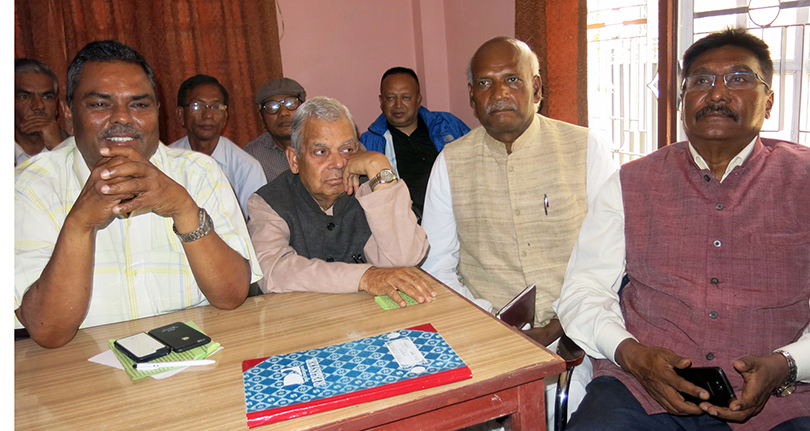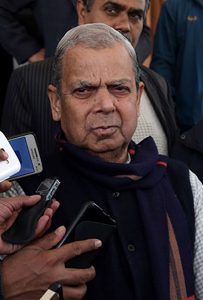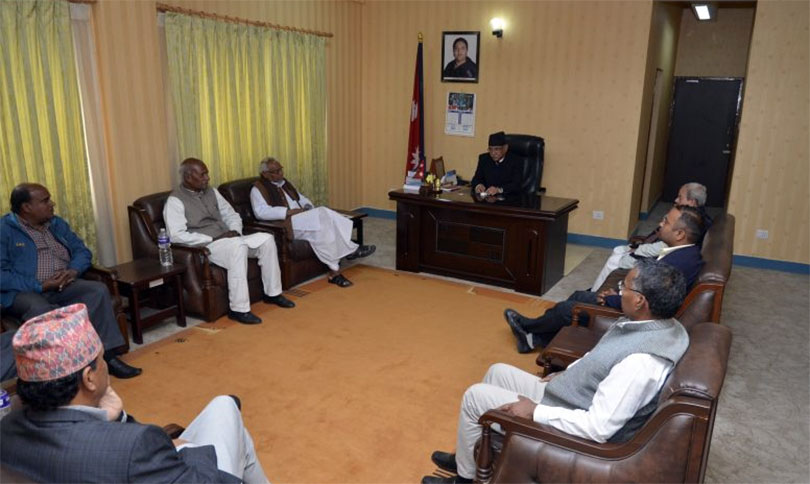
Kathmandu, April 23
Months after its launch, the Madhesh movement died down without achieving anything significant. Once again, the United Democratic Madheshi Front has announced another wave of movement, from Baishakh 15 (April 27). Prime Minister KP Oli is pretty sure that he will be able to deal with this wave easily.
At the other end, even the UDMF does not appear confident about the success of the upcoming wave of strife. This time, though, the front is preparing to make the movement rather soft.
UDMF plan
This time, the UDMF plans to take the movement to a whole new level. The aim is to expand the movement throughout the country, with the main focus on the national capital, unlike in its previous edition, which focused mainly on customs along Nepal’s southern plains. The UDMF strategy is to organise more sit-ins and demonstrations in Kathmandu this time.
The movement will start with the UDMF handing over a memorandum to the Kathmandu district administration office and organising protests. Programmes like these are unlikely to put pressure on the KP Oli government.
But this time, the UDMF is employing a strategy to rally indigenous nationalities from the hills in its protests. This strategy is likely to make a difference.
Tuladhar’s counsel
In a bid to take the Madhesh movement to the hilly regions of Nepal, UDMF has been holding talks with Padhma Ratna Tuladhar as well. But Tuladhar is of the opinion that the movement of Janajati-Madheshi combine will not attract Khas-Arya peoples, meaning the movement will lose steam, according to a source.
Tuladhar, according to the source, holds that the movement will have to adopt agendas that touch the whole nation if the idea is to make this one a nationwide movement. For this, there’s a need to bring Baburam Bhattarai’s Naya Shakti Nepal on board. That is what Tuladhar has been saying, according to the source.
But the UDMF and Naya Shakti have not hold talks on this matter.
Bhattarai has drawn peoples of Madhesh towards his Shakti by launching a Madhesh Yatra, a campaign in the southern plains. Naya Shakti is making preparations for its first national conference, so it is in no position to take part in the movement, the source maintains.
Naya Shakti is of the opinion that regional and ethnic agendas alone will not make this movement successful.
On the other hand, Madhesi leaders like Upendra Yadav are not in favour of bringing Bhattari on board, fearing that Bhattarai will be able to gain strength in Madhesh at their cost by joining their movement. Leaders like Yadav are only in favour of a joint movement comprising Janajatis and Madheshis.
Multiple sources say even the movement organisers feel a Janajati-Madheshi movement will not achieve anything big if it does not incorporate the concerns of Khas-Arya peoples.
Besides, people in Madhesh do not trust Madheshi leaders much. UDMF has a very weak presence in Madhesh and people there are seeking alternatives. In this context, there’s a possibility that the upcoming movement may not make much of an impact in the Madhesh.
Oli confident, but Deuba is a threat
In this scenario, Prime Minister and other government ministers are pretty sure that the Madhesh movement will not be able to topple this government.
Government Spokesperson and Home Minister are saying at public programmes that this movement will not be able to achieve anything. This shows the government is not taking the upcoming movement seriously. The government does not seem interested in talks with the UDMF. But Nepali Congress President Sher Bahadur Deuba’s recent visit to New Delhi and the four-point roadmap that Deputy Prime Minister and Foreign Minister Kamal Thapa submitted during his trip to the Indian capital are some of the things that may end up weakening Oli’s grip.
Indian Embassy acting as agent provocateur?
The Indian Embassy in Kathmandu, which is instigating forces opposed to the new constitution, is busy pressing agitating parties to cobble together a 27-party front and wage a movement. Embassy officials are meeting leaders behind the movement at star hotels. On Thursday, UDMF leaders held interactions with foreign diplomats.
After India and the European Union issued a joint statement from Brussels, the European Union headquarters, describing Nepal’s constitution as incomplete, Indian Embassy officials are busy putting things in place for the movement in Nepal. Reportedly, the embassy is pressing Madheshi and indigenous nationalities to launch a joint movement.
But will India be able to topple the Oli government through a Madheshi-Janajati movement? Even Indian officials have their doubts. Indian Embassy officials feel the Indian blockade could not make much of an impact in the past all because UDMF cadres themselves resorted to black marketing of oil.
Even leaders of agitating parties feel they will be able to shake the Oli government just because India or the EU or any other force wants the government to go. Even the Indian side is not relying solely on the UDMF, according to sources. But Deuba’s recent India visit has the potential to raise fear in the CPN-UML rank and file.
Testing waters
Even UDMF is not sure that the upcoming movement will succeed. In this context, UDMF partners are in favour of announcing some programmes to check the level of support from the public. At the same time, the government also wants to check the UDMF’s might. The testing of waters is likely to continue for about two months.























